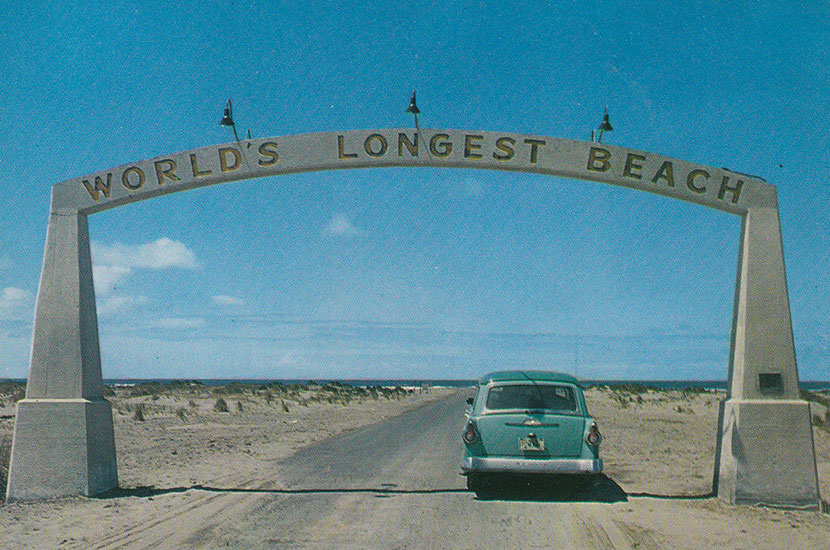Snow Peak is opening its first campground in the United States in Long Beach, Washington. In summer 2023, the Long Beach Campfield will welcome outdoor enthusiasts to experience the healing power of time outside on Washington's scenic southern coast. In anticipation of the opening, we're featuring the sights, activities and rich heritage of the Long Beach Peninsula in a series of blogs. Follow along on Instagram and sign up for our newsletter to learn more about the project.
Before ever stepping foot on the 28 miles of the Long Beach Peninsula’s wide, public beach, you might notice that there’s more to this coastal Northwest destination than sand. Map names — Ilwaco, Nahcotta, Chinook, Naselle, Willapa — derived from Indian chiefs and tribes recall the Chinookan peoples who thrived here for millennia before Spanish sailors first arrived and began to colonize the region. Chinook people live on the Long Beach Peninsula and in the surrounding area and continue to maintain their culture, language and traditions. They are working to restore federal recognition of the Chinook Nation. Visit their website to learn how you can support their efforts.
The Europeans renamed the area's landmarks – Dismal Nitch, Dead Man’s Cove, and Graveyard of the Pacific – hinting at harrowing stories of the dangerous waters where the deep river and mighty ocean collide. Storms, powerful surf and shifting sands are responsible for more than 200 shipwrecks to date.
 In the 1700s, explorers and traders sailed the Northwest coast naming landmarks, bays, rivers, and more. The promontory at the south end of the peninsula, Cape Disappointment, was dubbed so by English fur trader John Meares, in 1788, when he failed to find the great river. While it was Spanish explorers who first sighted the Columbia, it was named by American Captain Gray in 1792 after his ship, Columbia Rediva.
In the 1700s, explorers and traders sailed the Northwest coast naming landmarks, bays, rivers, and more. The promontory at the south end of the peninsula, Cape Disappointment, was dubbed so by English fur trader John Meares, in 1788, when he failed to find the great river. While it was Spanish explorers who first sighted the Columbia, it was named by American Captain Gray in 1792 after his ship, Columbia Rediva.
Late in the 18th century, European traders and maritime explorers exchanged goods for pelts with the tribes of the Lower Columbia River near Ilwaco’s Baker Bay at a place aptly named The Anchorage by Captain William Clark. This was years before Lewis and Clark realized Jefferson’s quest to explore the Louisiana Territory and navigate a water route from the Mississippi to the Pacific Ocean.
Lewis and Clark’s mapping of the West and arrival at the Pacific Ocean near present day Megler Point in Nov. 1805 opened the Oregon Territory, among other places, to westward expansion with traders and other fortune seekers staking land claims along the river and Willapa Bay.

When the Gold Rush spurred an insatiable hunger for oysters in San Francisco, the community of Oysterville was a boom town. In the mid 1800s, schooners would leave San Francisco Bay filled with California redwood ballast and return brimming with native oysters from then Shoalwater (now Willapa) Bay. The redwood was used to build homes in this charming town and neighboring Ocean Park. A self-guided walking tour shares the stories of buildings from this era.
As the U.S. military looked to fortify the West Coast, Fort Canby (built in 1864) and Fort Columbia (1896-1903) were established and two lighthouses were built in 1856 and 1898 to help captains navigate the mouth of the river. The batteries of Fort Canby can be seen in Cape Disappointment State Park in Ilwaco and officers’ quarters and barracks at Fort Columbia State Park, near Chinook.
Tourism set in early. Steamboats carried families from Portland to Ilwaco long before roads were carved through the dense forests to the coast. They docked in Ilwaco. Here passengers boarded first stage coaches and then the “Clamshell Railroad,” operated by the Ilwaco Railway & Navigation Company, to fill the hotels and summer homes along the route. These grand, wooden hotels, aside from the Shelburne, have since burned down while many of the Victorian-era summer homes stand to this day.
Pilings from docks along the Columbia are a reminder of the many canneries when salmon once flourished. Charter fishing out of Ilwaco remains a big draw during the summer months.

Long Beach has been marketing to visitors for over a century. When cars were introduced, The Great Depression hit, and roads made access to other coastal destinations possible, tourism stakeholders came up with marketing gimmicks to keep Long Beach on the map. The World’s Largest Frying Pan (on display in downtown Long Beach) traveled throughout the Northwest and was used to create the World’s Largest Clam Fritter in the 1940s, a sign claiming “World’s Longest Beach” was erected at the main beach approach and events such as the Razor Clam Festival were organized. Many festivals and events continue, inviting visitors to experience the unique culture of the region.
Looking at the history overall, it points to a land of discovery, entrepreneurial and creative peoples, and stories of endurance, perseverance, reinvention, and resilience – qualities that continue to this day.
Many opportunities exist to enrich your sense of place when exploring the southwestern-most corner of the State of Washington. Here are suggestions on where to start:
The Columbia Pacific Heritage Museum
Lewis & Clark Interpretive Center
Northwest Carriage Museum and adjacent Maritime Museum
Willapa Bay Interpretive Center
Carol A. Zahorsky: An adventurer by nature, Carol put down roots in the Northwest and has been touting its wonders ever since. When not at her computer or walking the beach, you'll find her hiking with her dog, tending to her gardens, and visiting with her daughters, wherever on the globe they might be.


